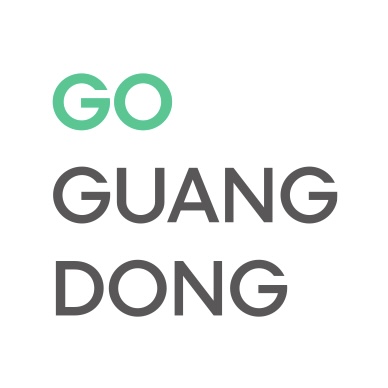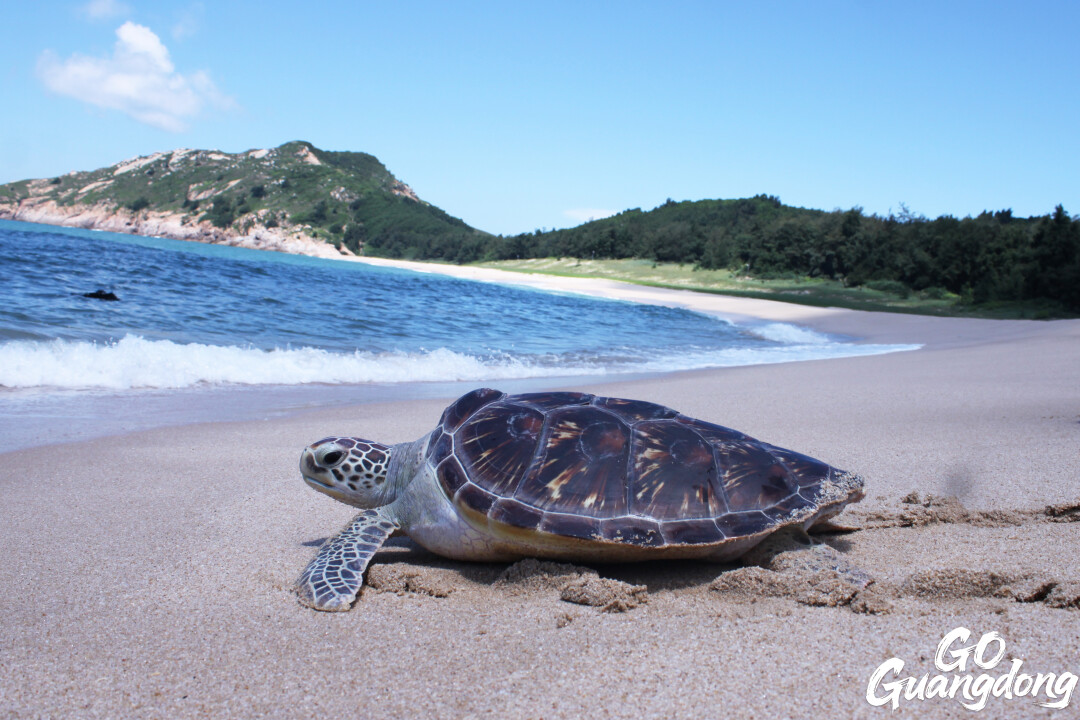
Huidong Harbor Sea Turtle National Nature Reserve, locally known as the Sea Turtle Bay, sits at the southern foot of Daxing Mountain where Daya Bay and Honghai Bay converge in Huidong County, Huizhou City. As China's only nesting ground for sea turtles along its 18,000-kilometer coastline, it stands as the nation's sole sea turtle nature reserve.
Designated in 1985 with approval from the South China Fishery Administration Bureau of the Ministry of Agriculture, the area was upgraded to a national nature reserve in 1992. In 2002, it was further recognized as a Ramsar Wetland of International Importance—now one of China's only 82 such globally significant wetlands.
Sea turtles are gentle and intelligent creatures that have inhabited Earth for approximately 200 million years. They possess the remarkable ability to recognize their birthplaces. Despite spending most of their lives roaming the open ocean, they will travel thousands of kilometers back to their natal shores to lay eggs during breeding season.
These marine migratory animals also undertake annual long-distance journeys. In winter, they migrate to the warm waters around Zengmu Ansha Island in the South China Sea to escape the cold; In summer, they journey north to the Diaoyu Islands in the East China Sea to avoid the heat, traveling distances of over 4,000 kilometers each year.
Yet, the rapid development of modern economies has inflicted severe ecological damage, pushing turtle species to the brink of extinction. Sea turtles that must return to their natal beaches to lay eggs often face lifelong infertility when unable to locate their birthplaces, causing populations to plummet.
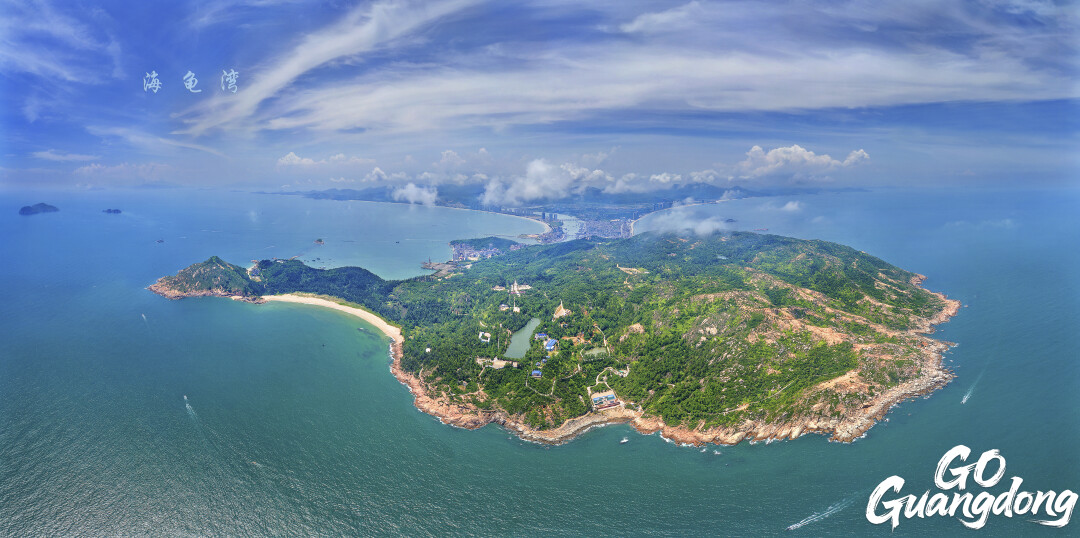
The Sea Turtle Bay
In China's Fujian and Guangdong coastal regions, there were once 14 nesting sites for sea turtles in the 1980s; today, only the Huizhou site remains. Asia endures the most severe turtle persecution: over 80 percent of Asian turtle species face varying threats, with more than 50 percent classified as endangered or critically endangered. Despite China boasting the richest turtle biodiversity in Asia, 70 percent of its species are now at risk.
Globally, only seven sea turtle species survive:
· Leatherback sea turtle (Dermochelys coriacea)
· Hawksbill sea turtle (Eretmochelys imbricata)
· Green sea turtle (Chelonia mydas)
· Olive ridley sea turtle (Lepidochelys olivacea)
· Loggerhead sea turtle (Caretta caretta)
· Kemp's ridley sea turtle (Lepidochelys kempii)
· Flatback sea turtle (Natator depressus)
Sea Turtle Science Education Center
The reserve's primary mission is to protect sea turtle nesting sites. Over the years, it has dedicated itself to safeguarding marine resources and the environment, with a core focus on conserving sea turtle populations. Meanwhile, it has vigorously promoted environmental education and scientific research, all contributing to notable achievements.
Nesting Beach Observation Deck
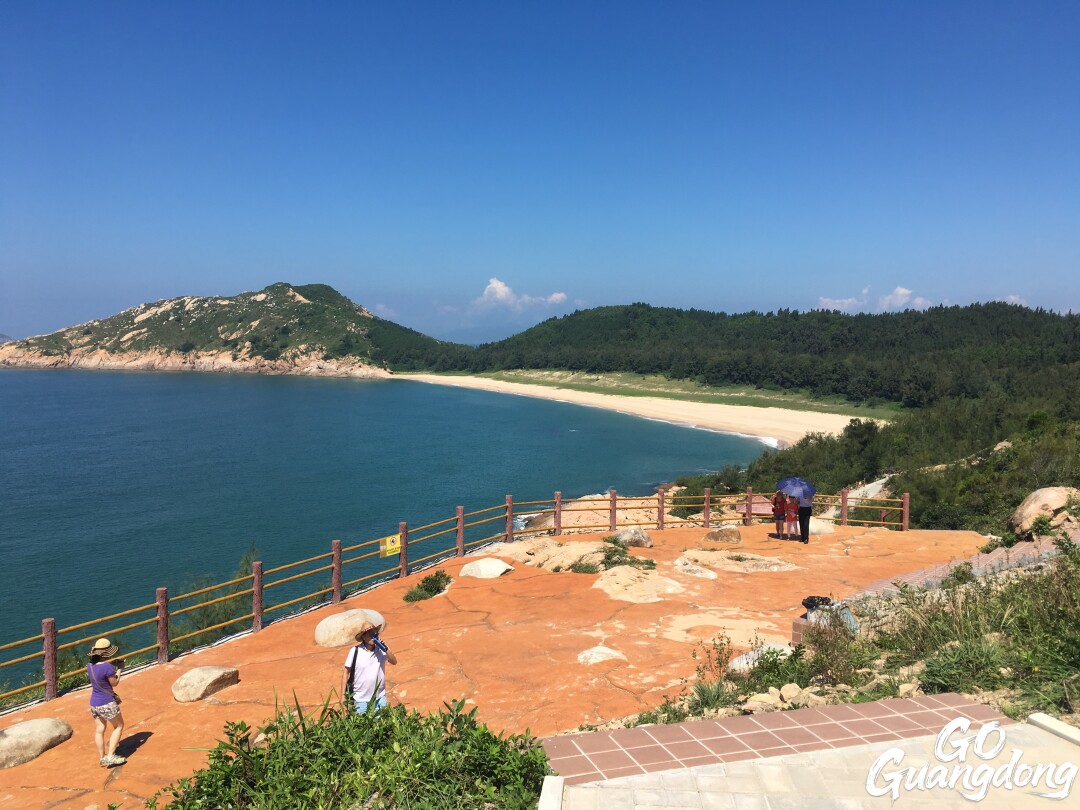
Nesting Beach Observation Deck
The nesting beach stretches about 1 kilometer in length, with its sand layer remaining soft year-round. For centuries, sea turtles have returned here to lay eggs. No matter how far they roam across the oceans, decades later, during breeding season (typically between the Dragon Boat Festival and Mid-Autumn Festival each year, usually between June and September), they follow the ocean currents back to their birthplace. They find this beach, crawl onto the shore under the cover of night to lay eggs, then slip back into the sea before dawn.
To date, this remains the last remaining sea turtle nesting site on the coast of the Chinese mainland. Decades ago, from the 1960s to the early 1970s, it was common to see masses of female turtles clambering ashore to nest. In recent years, however, only two or three turtles have nested here annually.
Situated on the continental margin, the reserve features a submerged valley bay with granite hills and a subtropical maritime monsoon climate. With suitable annual rainfall, seawater salinity and marine life, the area provides ideal conditions for nesting and egg incubation, a key reason sea turtles continue to choose this site.
The reserve is zoned into three functional areas: core area, buffer zone, and experimental area.
Core Area: Primarily a marine expanse spanning 4.13 km², this area encompasses critical migratory routes for sea turtles coming ashore to nest and their egg-laying beaches, featuring minimal human disturbance, relatively pristine natural conditions, and an intact independent ecosystem. It is under strict protection: entry by any individual or entity is prohibited.
Buffer Zone: Comprising both terrestrial and marine areas, it serves as a transitional zone between the core and experimental areas, and receives priority protection. Entry is permitted only for activities such as scientific research, specimen collection, or teaching internships—applications with detailed plans must be submitted to the nature reserve administration and approved prior to access.
Experimental Area: Also divided into terrestrial and marine sections, the area houses the reserve's administration office and supports nature education initiatives. From May 1 to November 30 annually, this area prohibits trawl nets, fixed nets, encircling nets, and other operations generating noise, light, or disruptions that harm sea turtle egg-laying and breeding.
To enhance management and conservation of the core area, the reserve has implemented a closed-off management system, prohibiting all human entry. Eight concealed high-definition surveillance cameras have been installed in the coastal grove to enable 24-hour monitoring.
Annually from May, during sea turtle migration, the reserve teams up with Huidong's fisheries law enforcement to launch a patrol system. Unauthorized vessel landings or illegal fishing in protected waters will spark immediate action. Rapid-response teams carry out coordinated sea-land operations to deter violations and enforce regulations.
Coastal Board Walkway
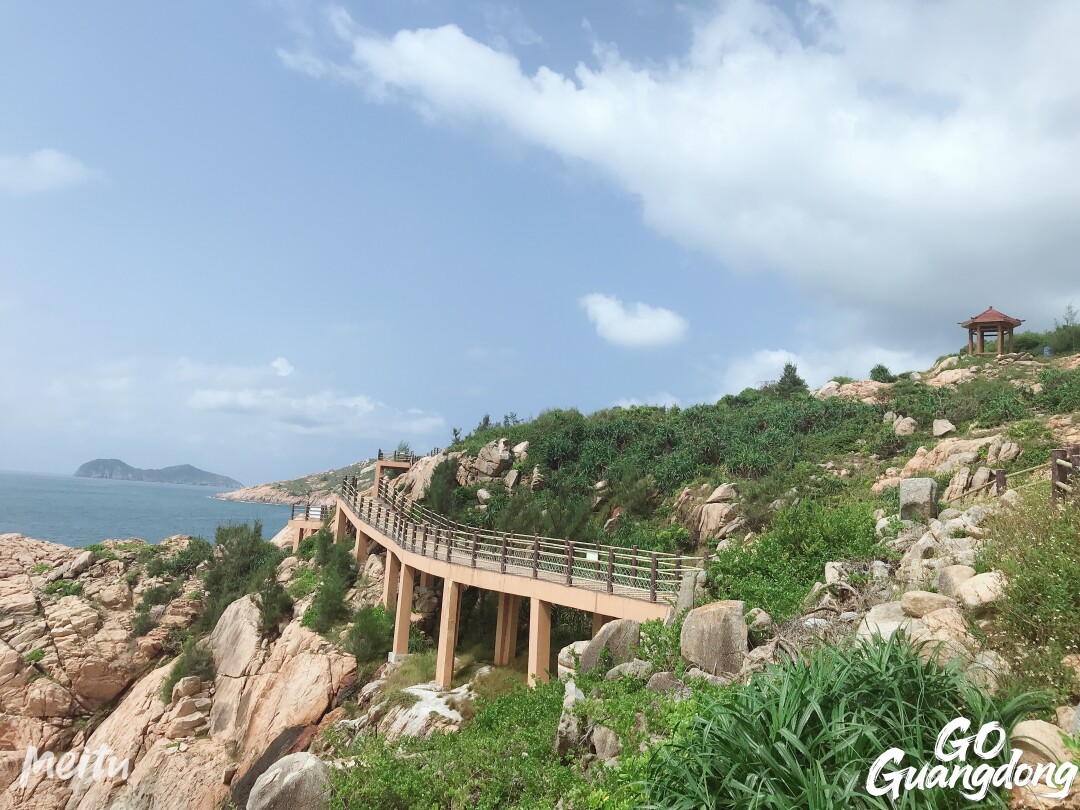
Coastal Board Walkway
The 2-kilometer coastal observation and patrol boardwalk along the reserve's coastline, constructed from 2017 and fully operational by late 2018, offers unobstructed views of all maritime traffic across the protected waters. This infrastructure enables precise monitoring of vessel movements, significantly enhancing the reserve's ecological conservation and management capabilities.
A female sea turtle lays around 1,000 eggs annually, yet only as few as one or two baby turtles survive to adulthood. To address this low survival rate, human intervention becomes crucial, enabling hatchling survival rates to reach 90 percent. Satellite tracking reveals that turtles from this area migrate as far north as Okinawa, Japan, and as far south as the Philippines and Vietnam, a round-trip journey of approximately 1,500 nautical miles from here to Vietnam and Japan alike.
Despite these vast distances, sea turtles return to nest here three years after their initial release. Released turtles demonstrate astonishing speed, reaching Hainan Island within a month. Since 2006, all released turtles have been implanted with microchips, allowing conservationists to scan and access their "unique ID codes" and migration histories with a simple reader.
Because sea turtles nest at low elevations, rising tides can submerge their eggs, preventing hatching. To address this, staff manually retrieve eggs laid below the high-tide line, reburying them in safer sand or incubating them in labs. From May to October each year, the reserve operates 24/7 staffing. During Typhoon Dujuan a few years ago, torrential rain and 13-force winds battered Sea Turtle Bay, toppling trees and tearing roofs off buildings. Yet no one evacuated as it was the peak of sea turtle nesting.
Today, the work remains grueling with low pay. What keeps the team going? A deep love for these creatures.
Despite the establishment of Sea Turtle Bay as a protected area for decades, the number of green sea turtles (Chelonia mydas) nesting on its shores has shown no significant recovery. Experts attribute this to two key factors:
Drastic population decline: Historical over-harvesting and habitat destruction have drastically reduced wild populations. Current estimates indicate fewer than 2,000 adult green turtles remain in the South China Sea.
Biological constraints: Green turtles require 20–50 years to reach sexual maturity, meaning most protected individuals are still juvenile and unable to reproduce.
In addition, female sea turtles exhibit irregular nesting patterns, typically reproducing only every 3–5 years after reaching maturity. This biological reality poses a critical conservation challenge, as even successful protection measures require decades to yield measurable population increases.
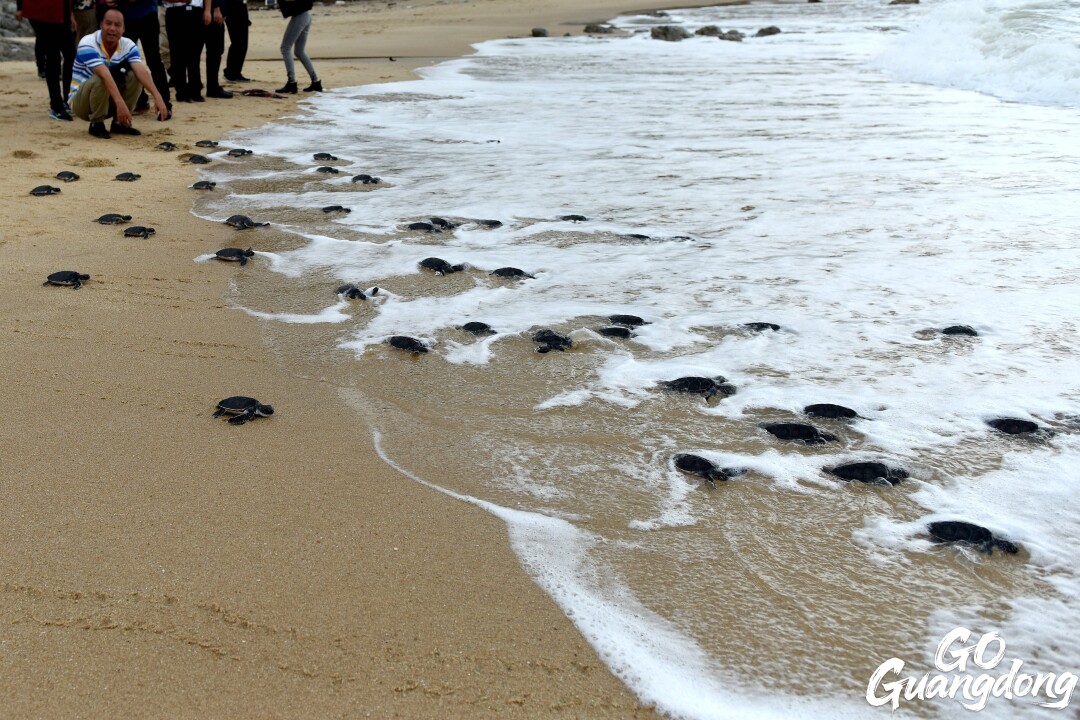
In 2017, the Huidong Sea Turtle National Nature Reserve successfully hatched 639 hatchlings.
In 2017, the technical team at the nature reserve successfully cracked the challenge of artificial breeding for green sea turtles. They induced 5 captive-bred adult female turtles to come ashore and lay 20 nests of eggs, totaling 1,616 eggs, which hatched into over 740 baby turtles. This breakthrough filled a critical gap in China's full artificial breeding technology for green sea turtles, marking a significant milestone in the nation's use of scientific tools to protect sea turtles.
Beyond this achievement, the reserve has also mastered key technologies including the design of sea turtle breeding bases, analysis of sea turtle migration patterns, satellite tracking, microchip tagging, QR code positioning, and genetic profiling. These advancements have significantly enhanced the reserve's conservation and management capabilities.
Sea Turtle Rearing Center
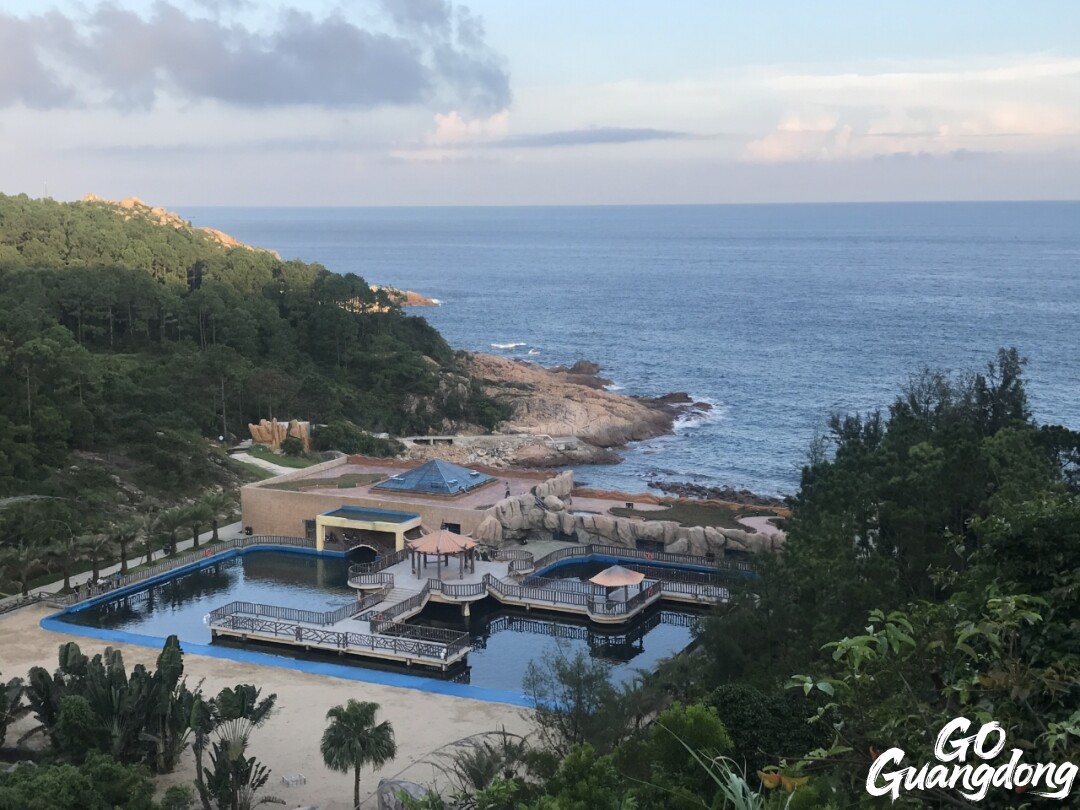
Opened in January 2019, the Sea Turtle Rearing Center spans 15,000 square meters, with a construction footprint of approximately 5,300 square meters. Comprising three main components, namely, indoor overwintering pools, outdoor breeding pools, and an artificial beach, it stands as China's first specialized facility of its kind. It integrates functions including sea turtle breeding and rehabilitation, scientific research, nature education, and ecotourism.
The indoor overwintering pool is equipped with a complete mechanized water circulation and treatment system, including water purification equipment, supporting circulation machinery, and storage facilities. This system ensures that sea turtles can maintain optimal growth and development conditions even during the coldest winters, safely and smoothly navigating the harsh season.
Combined with the outdoor pools and hatching beaches, these facilities create a semi-natural ecological environment that closely mimics their natural habitat. This setup lays a solid foundation for the artificial breeding of sea turtles.
The reserve also operates a Sea Turtle Rescue and Rehabilitation Center, equipped to treat injuries, identify species through morphological analysis, collect biological samples, such as blood, fecal swabs, and implant microchip transponders (acting as "digital IDs") for lifelong tracking.
These non-invasive implants allow researchers to monitor individuals via special scanners without disrupting the natural behaviors of sea turtles. After rehabilitation, sea turtles are released back into the ocean during optimal tidal conditions.
The center is pioneering a 3D integrated monitoring system combining satellite telemetry, drone surveys, and underwater photogrammetry to map critical habitats and track post-release migrations. This platform integrates:
Ecological corridors: Artificial migration channels connecting breeding pools to natural nesting beaches.
Environmental sensors: Real-time monitoring of temperature, salinity, light penetration, and anthropogenic pressures, such as, fishing gear entanglement hotspots.
AI-driven analytics: Predictive models for habitat degradation and population recovery.
The outdoor breeding complex houses about 50 adult green turtles in climate-controlled ponds featuring automated filtration systems. During breeding season (usually in March-April), females ascend artificial nesting beaches under moonlight to deposit clutches. In 2021 alone, 46 nesting events yielded 1,880 hatchlings, demonstrating the facility's success in restoring wild populations.
Reported by Yin Juewen
Photo by Huidong Harbor Sea Turtle National Nature Reserve, Nanfang Daily
Yu Chenxing also contributed to the report.



